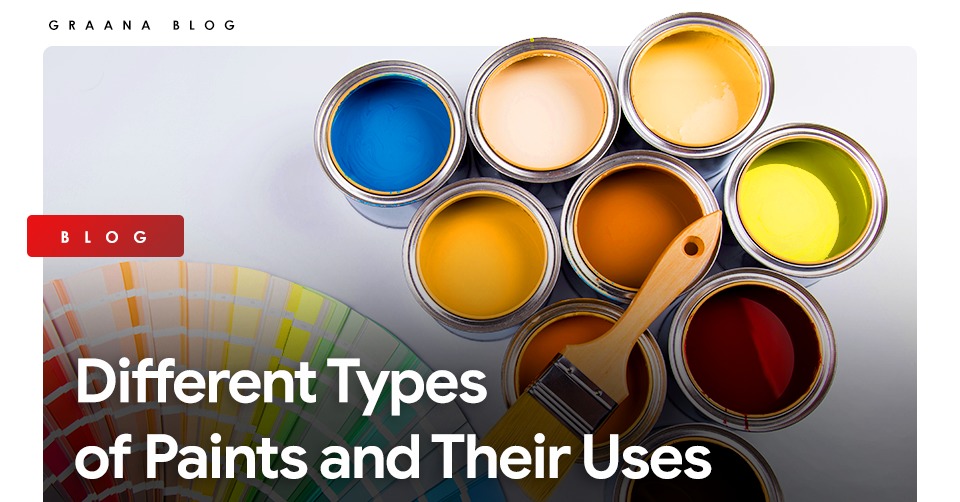Paint contributes to the overall beauty and looks of the buildings. In other words, it is one of the essential elements for renovation and remodeling. Moreover, paints have additional uses and applications rather than enhancing the overall beauty of the buildings. Thus, painters and people who are thinking of leaning towards a new look must understand and have strong knowledge about different types of paints and their performance features. Furthermore, contractors have to keep this notion in mind in the application of construction scheduling software. Painting services and the work that they offer are best organized and executed via software tools. This way, it is easy to determine which paint is best for each application or project.
Identifying the features and performance is crucial for selecting the best product for each application.
What Makes Paint an Excellent Quality?
This is the most asked question. Paint contractors are very particular about choosing the best painting products and applying the best painting methods and practices to meet clients’ preferences and expectations. However, today the world is moving at a high pace with technology, so there are software technologies available for contractors that would assist them in managing and organizing painting projects and services, resulting in acquiring the desired goal for their clients. A software application such as builders schedule software is one of the software technologies used today. It has real-time collaboration, faster scheduling, and efficient and effective supervision for any project and services that make painting projects run seamlessly. Moreover, painting projects and services are best achieved by investing in software like crew schedule software.
One important difference between low-quality paint and high-quality paint is the number of components used to manufacture that paint. To be precise, excellent quality paint has the following components.
- Solvent 15%
- Binder:40%
- Pigment: 20%
- Extender:20%
- Additive: 5%
It is important to observe that high-quality paint is supposed to be not absorbent; that water is not absorbed into paint. Lower quality paints are water absorbent and thus wear off quickly by peeling and bubbling. The price of paint can rise quickly as the percentage of binders and pigments in the paint increases. The long-term effect of the paint, on the other hand, outweighs the cost of additional repainting. Since it cannot be done every time, higher-quality paint is worth spending.
Paint has a variety of reasons:
- Insects, rain, solar radiation, and other external forces must be protected.
- Easier to clean and maintain: Well-painted surfaces are less challenging to keep clean and safe.
- Increasing a surface’s visual appeal
- Waterproofing
- Improving the surface’s durability
Before choosing the type of paint for a specific application, it is essential to consider its physical properties. A good-quality paint offers the following benefits:
- Easy application.
- Fast-drying.
- Formation of a thin film with no cracks.
- Rugged and durable coating.
- Weather-resistant.
Types of Paints
Oil Paint
Oil paints are used as white lead as a base. This is applied in three coats: primer, undercoat, and finish coat. Oil paint can achieve mat, and glossy finishes yet are durable and affordable. Oil paints are easy to apply, and the painted surfaces are easy to clean. Oil paint is used in walls, metal structures, and windows.
Remember that oil paint is not a suitable choice for humid conditions, and it takes a lot of time to dry completely. Furthermore, before oil paint application, the pigment must be added.
Enamel Paint
Lead or zinc is added to varnish to make this sort of paint. To obtain a wide range of hues, pigments are applied. Enamel paints dry to a durable, glossy finish that is easy to clean. They are waterproof and chemically resistant, and they provide good coverage and color retention. Some common uses of enamel paint are:
- Wood trims, flooring
- Interior exterior wall
- Stairs
- Wicker, masonry, glass, etc.
Emulsion Paint
Emulsion paint consists of polyvinyl acetate and polystyrene as binding material. Dries such as cobalt and manganese are also used in emulsion paint. They can be water or oil-based. Talking about the pigment, it is added to achieve the desired shade. The surface of emulsion paint can be cleaned easily, and it is fast drying as well. After application, it offers durability and good color retention.
Emulsion paints are majorly used for interior walls, ceilings, or masonry work. Some emulsions are also used for woodwork.
Cement Paint
Cement paint usually comes in powder form. This powder is mixed with water to acquire the paint-like consistency. The base material is white or colored cement. However, it may contain other pigments and additives. Cement paint is very durable and waterproof. It is commonly used on rough internal and external surfaces. Cement paint dries typically in 24 hours. It should be applied in two coats to prevent dampness issues.
Eggshell Paint
Eggshell is glossier rather than matte. It gives a shiny look which makes it its most significant selling point. Moreover, eggshells are highly durable and long-lasting. You might have witnessed that eggshell paint is used in living rooms and other prominent house areas. Eggshell paint provides practical protection while also looking beautiful.
Bituminous Paint
Bituminous paint contains tar or asphalt, which gives it a lack of color. It is waterproof and alkali-resistant. However, it is not suitable to be applied at places exposed to the sun.
Bituminous paint is used on ironworks, concrete foundations, and wooden surfaces. It also provides rust resistance when applied to metals.
Aluminum Paint
The oil varnish is mixed with aluminum particles to get aluminum paint. It is resistant to electricity and weather exposure. This type of paint is mostly used for metals and woods and some specific applications such as gas tanks, radiators, water pipes.
Anti-Corrosive Paint
As the name implies, Anti-corrosive paint is chemical resistant in nature. It is made of linseed oil, fine sand, and zinc chrome. It is black. Anti-corrosive paint is affordable and durable. It is commonly used for pipes and metal surfaces.
Spray Paint
Spray paint is widely used in arts and crafts projects. Spray paint will also be used for furniture and other chores around the house. Although this isn’t something you’d use to paint your walls, it is a useful form of paint to be aware of. When using spray paint, though, you must exercise -caution.
This sort of paint has a strong odor and should not be used in a confined space. Spray paint users should put on masks to protect themselves from the fumes. It’s best to spray paint in a well-ventilated space or outside. Many people use spray paint to produce beautiful works of art, yet it has also been linked to vandalism.
Chalkboard Paint
Chalkboard paints explain its texture by its name. It creates a chalkboard surface that can be used to write or draw on with chalk. However, it isn’t a good idea to apply it in your home. However, it can be great for an accent wall.
Satin Paint
Satin paint is similar to eggshell paint. They have tiny differences, such as the satin paint is a touch glossier than eggshell, which is not noticeable by many people. These two paints overlap each other. So, whichever you decide for your paint project is a good choice. His is a slightly glossy paint to meet certain people’s needs. This paint is durable and will work for any room of your house.
This durable paint will work well for just about any room of your home.
Gloss Paint
Gloss paint is known to be the kind of paint that can be cleaned very easily. Similar to the semi-gloss paint mentioned earlier, it can be scrubbed or wiped without any effort. This not only saves a lot of time but is a great way of cleaning and making your walls shiny and pristine. Your wall will look very smooth, and it will bring the whole room together once cleaned right.
A glossy finish reflects more light than the semi-gloss paint; resulting in the prominence of any flaws on your wall.
Here’s a quick cheat sheet for the best finish by room.
- Bedrooms, Hallways, Doors: Satin
- Bathroom and Kitchens: Semi-gloss
- Ceiling: Flat Finish
- Decorative areas: Eggshell
- Wood surfaces such as cabinets, trims, doors: High-Gloss
Keep following Graana.com for more insightful blogs, news, and updates!




